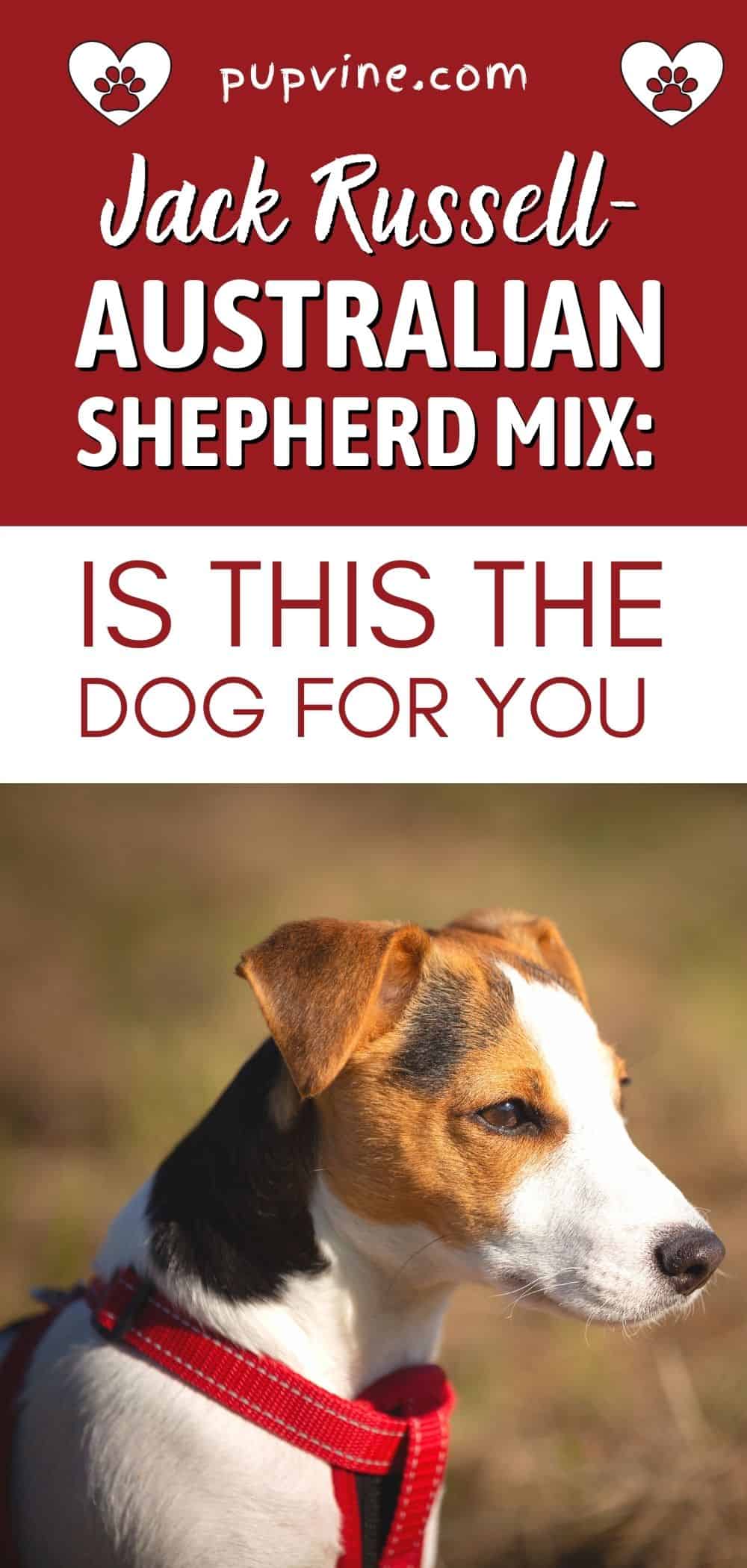When looking for your perfect dog, you will find some more popular pure breeds, and some less popular mixed breeds.
One of the slightly less popular dog choices is the Jack Russell – Australian Shepherd mix.
Coming from two fantastic dog parents, the Jack Russell Terrier and the Australian Shepherd, this puppy has been unfairly forgotten.
Not many people are introduced to this cute cross. That’s why it’s necessary to present the Jack & Australian mix in the right light… and we are going to do just that.
Buckle up because we’re going to explore the wonderful creation this dog is, and tell you exactly why this dog is the right one for you…
The Story Of The Jack Russell – Australian Shepherd Mix
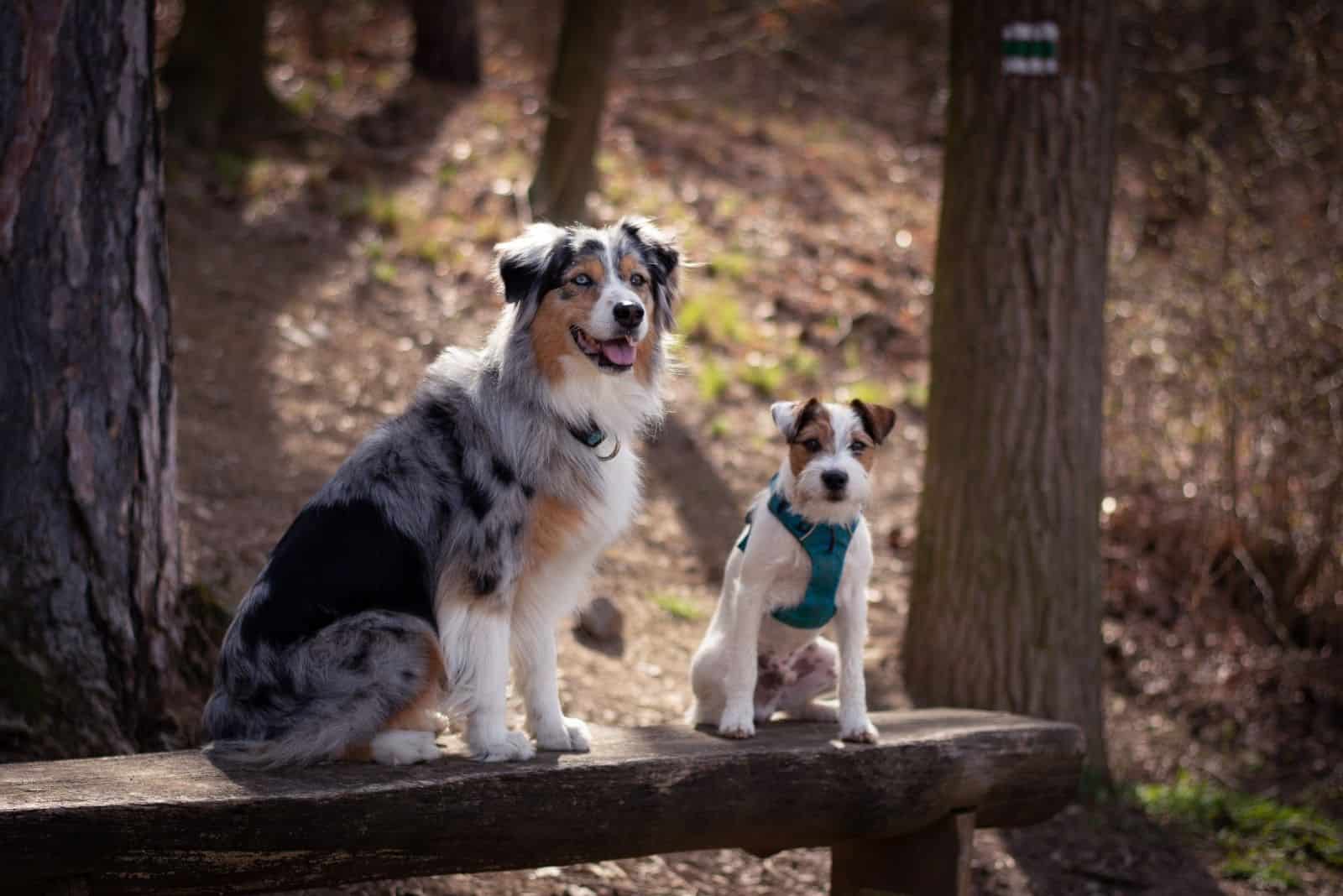
Much like any other designer dog or hybrid, the Jack Russell Terrier and Aussie mix doesn’t have a long and specific history.
This mixed breed was created only some twenty years ago. The popularity of the Jack Russell – Aussie mix grew thanks to shelters and accidental breeding.
To understand the Jack Russell and Aussie mix, we should take a look at its parents and their story. Here’s how mommy and daddy Jack and Aussie once started.
The Jack Russell Terrier
The story of the Jack Russell Terrier began in the mid to late 1800s in England, Devonshire, when Reverend John Russell bred one of the finest terriers that got named after him.
Reverend Russell had a huge passion for hunting foxes and breeding fox hunting dogs.
Jack Russells are the finest strain of working terriers. However, they’re not purebred, meaning they have a broad genetic make-up, a broad standard, and do not breed true to type.
The reason behind this is that they were bred only for hunting since the beginning.
What makes these pups so unique and versatile is their varied genetic background based on years of inbreeding, along with a variety of sizes and types.
The Jack Russell is an energetic dog breed ready to hunt down your heart and keep it forever!
The Australian Shepherd
It’s difficult to determine the Aussie’s past and lineage. Name a dog with more misleading names!
The Aussie was known as the Spanish Shepherd, the Pastor Dog, the Bob-Tail, the New Mexican Shepherd, the California Shepherd, and the Australian Shepherd.
According to some sources, dog lovers bred the Aussie somewhere in the Basque region of Spain where they were used as shepherds.
From there, the breed crossed the pond and emigrated to the West Coast of America via Australia.
Still, the origins of the breed are not precisely defined. However, the breed did develop in western North America in the late 19th and early 20th centuries.
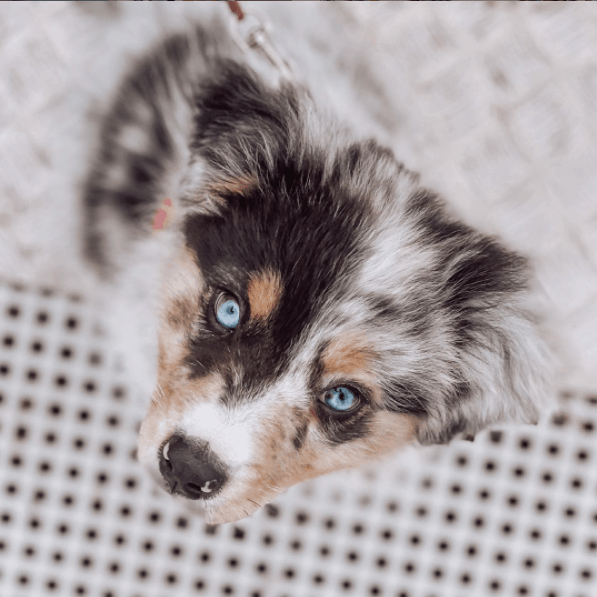
Photo from: @goldie_sammy
Another source claims that these dogs got their name after the imported sheep they took care of.
Unlike other herding dogs, the Australian Shepherd isn’t affected by altitude, and thus, became popular in the Rocky Mountains region.
The original breeders were ranchers from Colorado who began breeding and distributing these pups all over the USA.
Back in the time when the Aussies were used primarily as working dogs, the shepherds were interested in their working abilities rather than in their good looks.
Over time, shepherds interbred breeds that they thought would give better performance in specific regions.
E.g., dogs from Europe developed and worked well in the eastern USA because of the similar landscape and climate conditions.
The next logical conclusion was that the West coast of the USA needed different kinds of dogs. So, when the Churra, or Spanish flocks of sheep, were introduced as a food source, the shepherds brought over Spanish dogs.
These dogs proved to be capable of performing well in wild and dangerous territory. They were herding dogs as well as great guard dogs who did a great job of protecting from predators.
Selective breeding was what enabled the breeding of an effective stock dog in Western America.
This dog breed had to have speed, energy, endurance, flexibility, intelligence, independence, and the ability to handle harsh weather conditions, and still remain obedient.
Cuteness Overload: How Does a Parson Russell Terrier and an Aussie Shepherd Mix Look like?

Dog genetics work the same way as human genetics, meaning they receive dominant and recessive genes from their parents.
Mixing a small breed like the Aussie and the Parson Russell Terrier means that there is no way of telling how big or small your puppy might be when it grows up.
Both parents show they share the same coat colors, such as black, tan, and white, with the Australian Shepherd showing less white.
The Australian side of the family can carry different colors in each eye, which is a trait the offspring might inherit.
In some cases, mixed-breeds might look similar to one parent, yet still have the recessive traits of another parent.
Also, the dog might resemble both parents at the same time! It’s pretty much playing the genetics lottery here.
Therefore, there are no standard traits for a JRT and Australian Shepherd mix doggy.
Unless you pay big money for someone to create you the perfect mix of these two dogs, you’ll end up with whatever Mother Nature gives you.
Will it be more like a JRT or an Aussie? Only time will tell.
Still, when choosing this mix puppy, one must think of the general traits the parent dogs have.
The Australian Shepherd is a fairly large dog breed weighing around 35 to 75 pounds, and standing tall at 18 to 23 inches at the shoulder. Females are slightly smaller.
The Parson Russell Terriers are small dogs weighing 14 to 18 pounds, and males can reach a height of 10 to 15 inches at the shoulder.
It’s a rather odd combination of two dog breeds, but this isn’t the first time in the canine world that big dogs have mixed with small ones.
That’s why we have so many adorable mixes of contrasts like:
• Husky Jack (Siberian Husky and Jack Russell Terrier)
• Chipit (Pitbull and Chihuahua)
• Beagador (Beagle and Labrador)
• Borgi (Border Collie and Corgi)
• Golden DOX (Golden Retriever and Dachshund)
• Border Coltese (Border Collie Mixed with Maltese)
• Bossi Poo (Boston Terrier and Poodle)
• Bull-Jack (Bulldog and Jack Russel)
• Aussiepom (Australian Shepherd mixed with Pomeranian)
These are all fairly young designer dogs, and you never know what will crawl out of the doggy kennel.
Will it be a complete mix of two breeds or more like one of the parents? You’ll never know until it grows up.
Personality: Is the Cutest Crossbreed the Kindest, too?
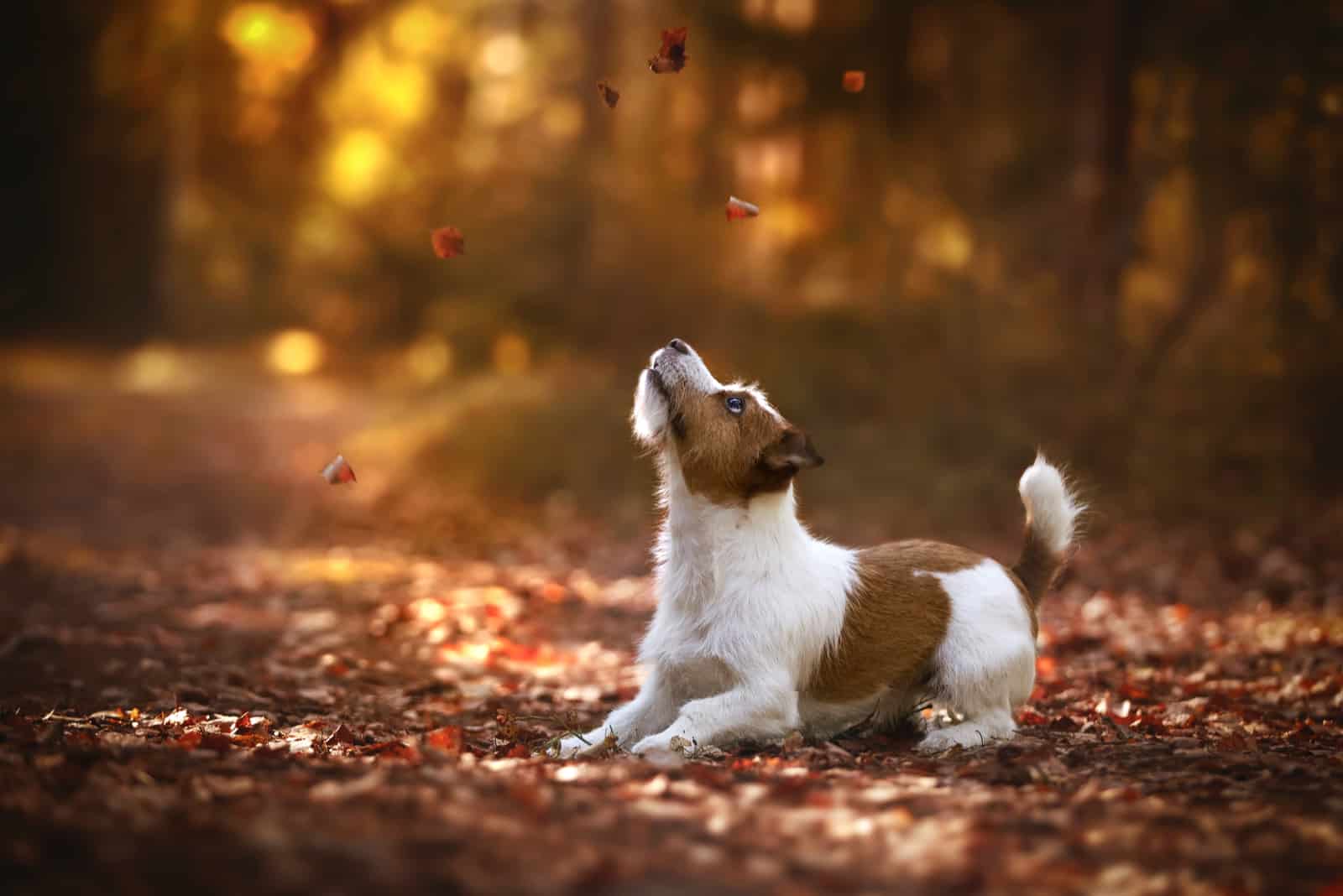
Both parents, the JRT and the Aussie, are huge on pleasing their master. These pups will jump through fire to get you what you want.
Their mix? Couldn’t be better! A JRT and Australian Shepherd mix is truly fond of its owner.
Don’t doubt for a second if this is an adoptable dog. Indeed, the JRT and Aussie mix is quite energetic and frenzy in some cases, but that shouldn’t stop you from adopting.
The big energy stocks simply mean more time for exercising.
All in all, this pup is made to be with his family at all times. Leaving him alone for several hours a day isn’t a good idea.
They belong with you, and they want to feel like they are part of the pack the whole time.
If this isn’t proof of their affection, what is? Learn also why Jack Russells follow their owners everywhere.
This mixed breed will show you any time how much he enjoys spending time with you.
What you need to give in return is nurture in every possible way.
Every dog should experience positive reinforcement and socialization from the earliest period of life. Training in puppyhood is crucial to get an obedient dog in adulthood.
To calm this energetic crossbreed, you’ll need lots of patience and love. It’s not that hard, is it?
How Healthy Is The Jack Russel And Australian Shepherd Crossbreed?
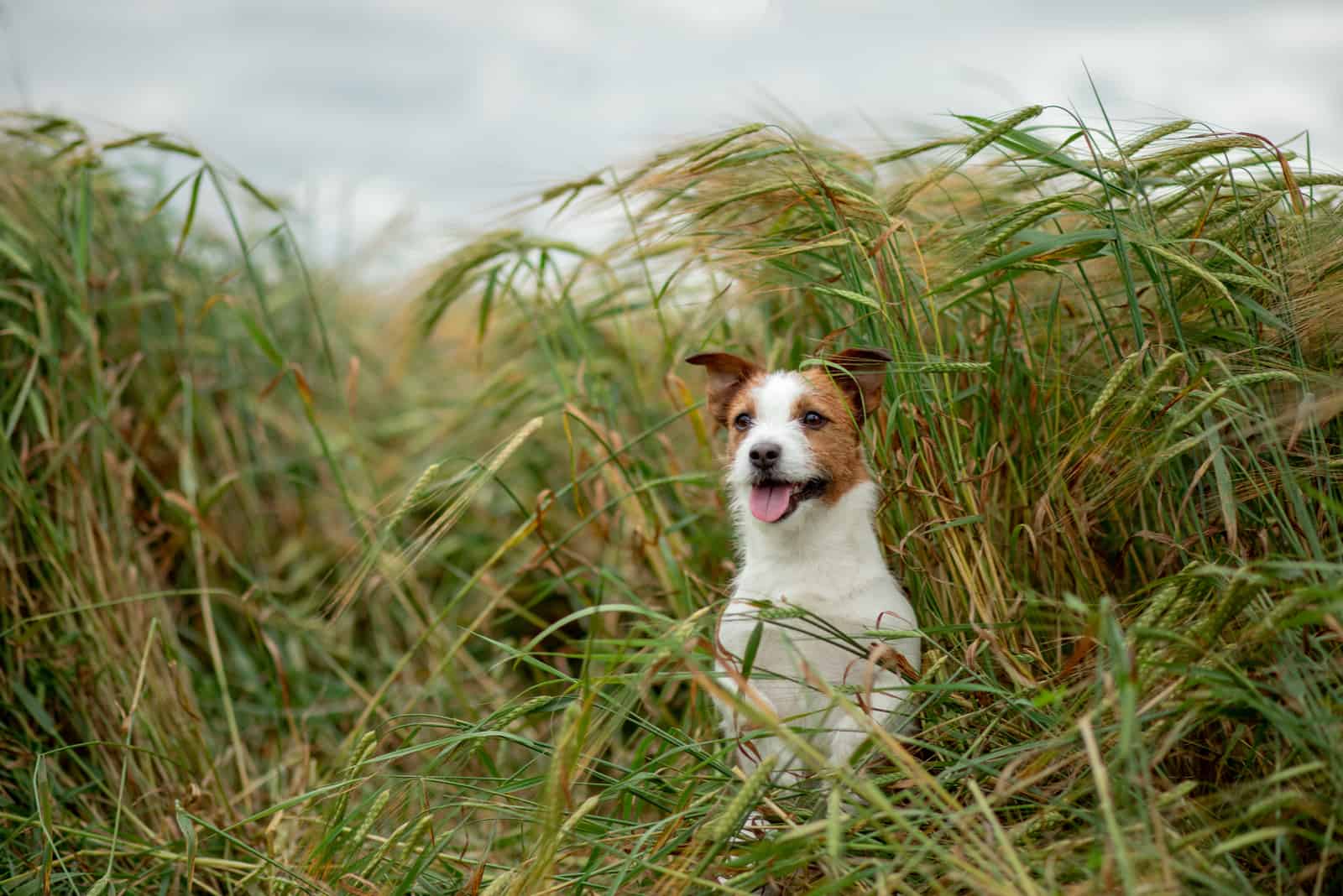
Every dog can develop significant genetic health problems. It’s only a matter of which breed is prone more or less to them.
In the perfect world, a breeder would never let you have a sick puppy or a puppy with serious health conditions.
A good breeder will be open about the health problems a breed is facing and offer full health clearance. Any breeder that avoids this isn’t supposed to be a breeder at all, especially not yours!
As we mentioned before, it’s always a lottery with the mixed breeds. The same goes for health issues.
In order to get a clear picture of what your crossbreed might be prone to, first, we have to know which diseases the parents fight.
The JRT is a generally healthy dog but is still susceptible to many health conditions. The most important and most dangerous ones are:
• hereditary cataracts
• congenital deafness
• ataxia
• patellar luxation
• myasthenia gravis
• Willebrand disease
• Legg-Calve-Perthes syndrome
In other words, sight, joints, and bones are their weak points.
The Australian Shepherd is also a genuinely healthy dog, but it still can develop difficult health conditions, such as:
• epilepsy
• hereditary eye disease
• hip dysplasia
• heart disease
• chronic allergies
• hypothyroidism
• drug sensitivity
• deafness
• osteochondritis dissecans
• skin infections
Keeping in mind their health problems, some of them being quite serious, both dog breeds can lead a fairly long dog life.
The average lifespan of a Parson Russell Terrier is 13 to 16 years while the Australian Shepherd lives a bit shorter, 13 to 15 years.
This can only mean that the puppy will have the same lifespan as its parents.
Taking a dog to see the vet regularly is of utmost importance. It’s really not a rule that mixed breeds are healthier than pure breeds.
Any dog can be as healthy as a horse if only they receive proper care.
Aww, Look At That Fluff! Grooming An Australian Shepherd Mix
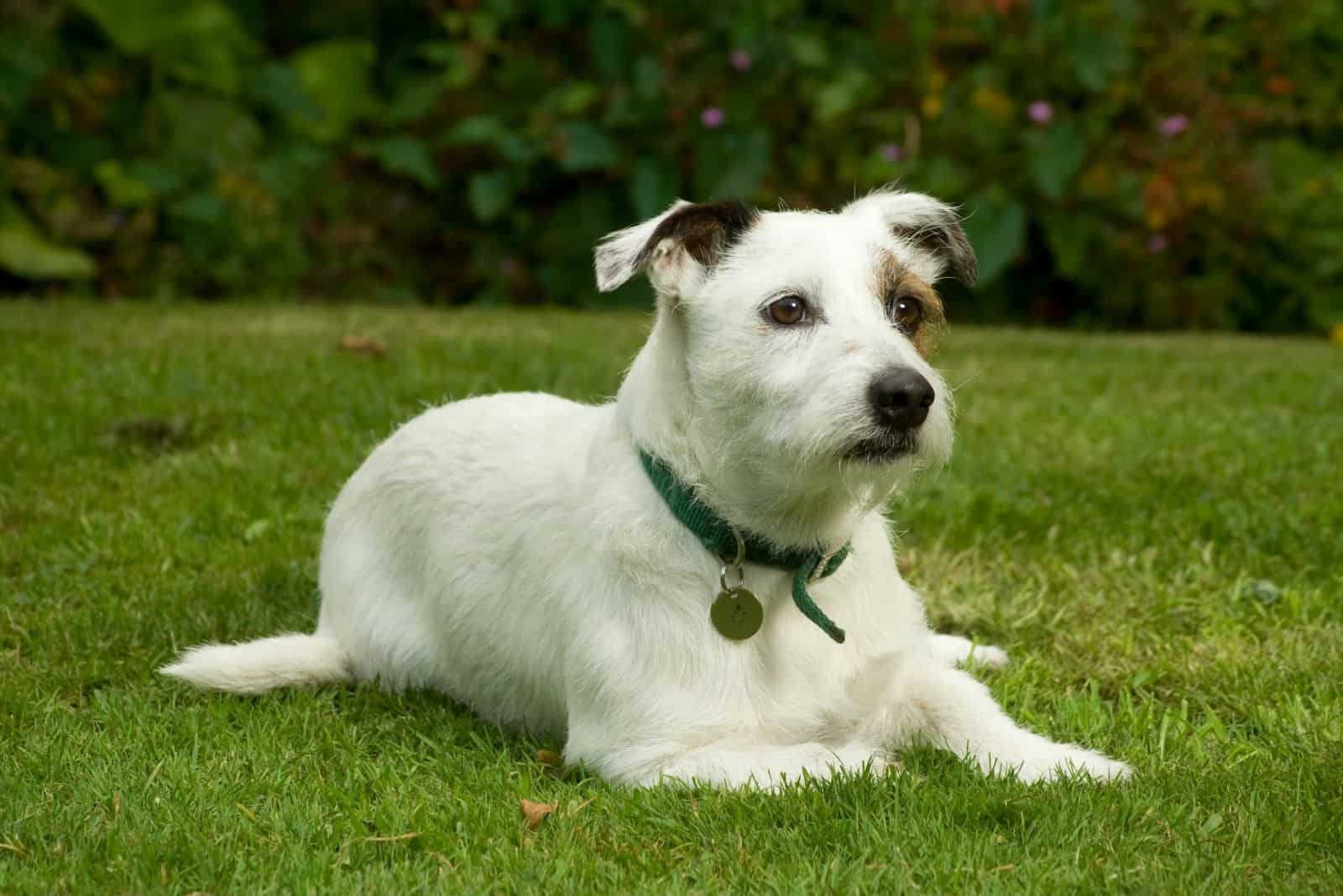
Once more, we go back to the line: It’s all a lottery!
Grooming a Jack Russel and Australian Shepherd mix can be a piece of cake. This is because the parent dogs aren’t that demanding when it comes to grooming.
Truth be told, the Australian Shepherd is a bit more troublesome. You will have to devote time to grooming at least once a week.
Snoop around for good hair brushes, such as the slicker brush or the long tooth rake. You will need one.
The Parson Russell Terriers are a delight for groomers. They don’t need as much trimming as an Australian Shepherd.
Brushing them once a week, maybe twice during the shedding season, will be just alright.
Both dog breeds are modest shedders, so don’t expect their puppies to be anything less than this.
Grooming is much more than styling the hair and making the pup look adorable; it’s also a matter of hygiene and health.
A matted coat hurts, and a dirty dog can become a sick dog. But, a well-treated dog can only be… A HAPPY DOG.
Play Time! How Much Exercise Does This Mixed Breed Need?
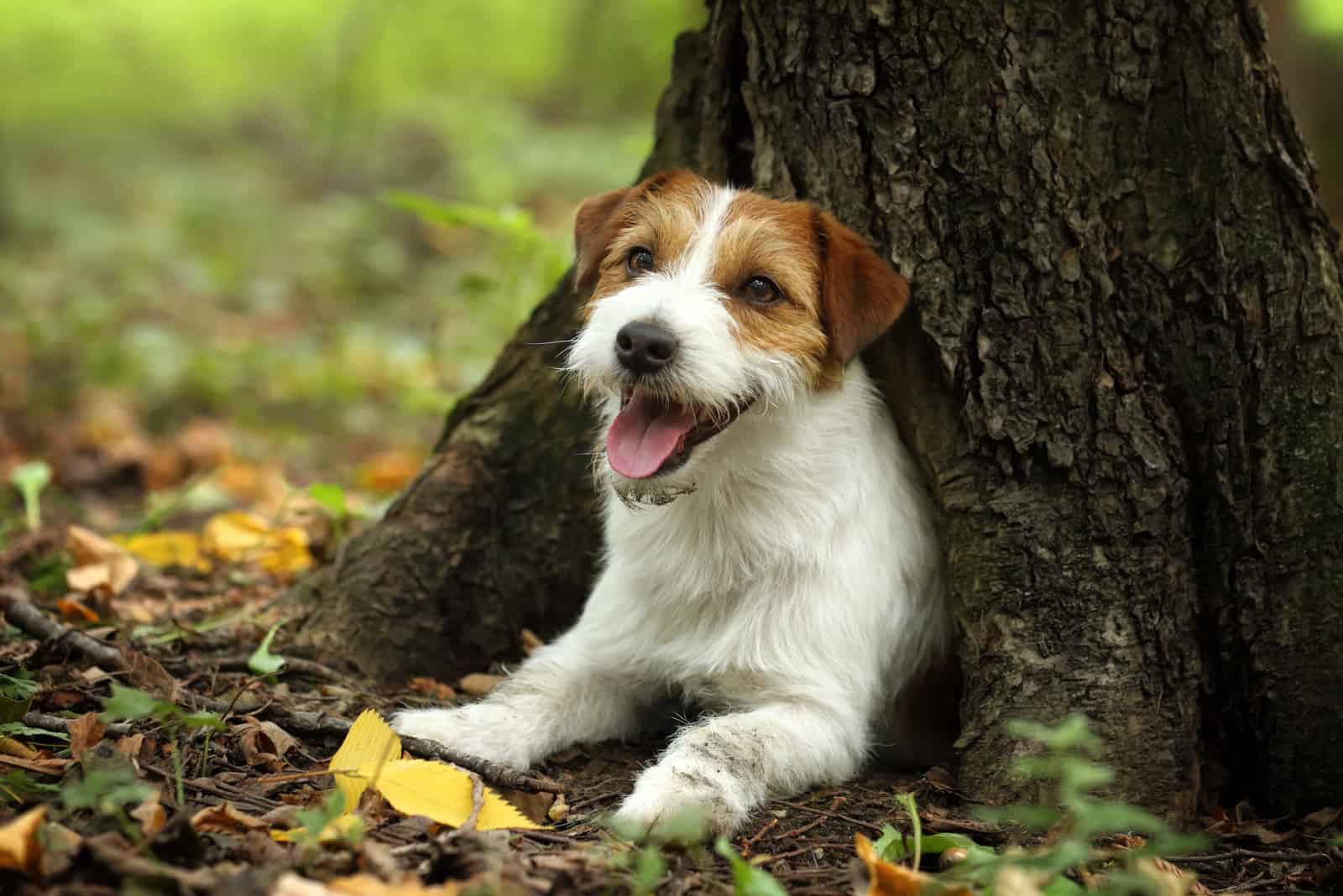
Having in mind their history and their primary job, the answer to our question of the house is PLENTY.
Both parent dogs were once working dogs that were designed for herding or hunting.
It’s only natural to say that their pups will need a lot of exercising, too.
The Jack Russell – Australian Shepherd mix isn’t built for laying around and catching some Zs.
Extremely long walks and hikes are what these dogs absolutely adore! Do we really need to mention playing fetch or tug-o-war?
Another thing your doggy might enjoy is treat puzzles. These are an excellent way of having them think hard to get a treat. They really tickle their intelligent side.
In case you’re away from home all the time, you should either bring your pup with you or don’t pick this breed at all. A long absence will only make your dog depressed.
It’s not that hard to devote time for playing with your pup. After all, you took it into your family, so it’s your responsibility now. Never run from your responsibilities.
Training: Can YOU Handle It?
As mentioned before, this crossbreed is very intelligent, and it should be a delight to train. Well, it would be if they weren’t so stubborn.
This dog needs a strong trainer; someone who will not slack off with the training, and someone they can’t take advantage of.
Every dog breed, including this one, responds best to positive reinforcement training, meaning praise, a treat, or a belly rub after something is well-done means the world to these pups.
After all, you will catch more flies with honey than with vinegar, right?
What’s interesting about these dogs is that exercising stimulates them. The more training they get, the easier they will be to train.
In addition, early socialization acts positively on every dog’s training. Make sure you two spend enough time at the dog park playing with other four-legged friends.
Exposing your dog to many different people and other dogs will teach them to act the right way around anyone.
Chances are, a well-socialized and trained puppy won’t show signs of aggression.
Yummy, Yummy, What’s In Their Tummy?
Every dog that is prone to hip and joint conditions, especially hip and elbow dysplasia, should take fish oil, glucosamine, and chondroitin supplements.
This doesn’t mean feeding them supplements exclusively. Dogs need nutrient-rich kibbles that will ensure that their daily dose of vitamins, proteins, good fat, and carbs is satisfied.
It’s best if you don’t overfeed these dogs, especially because of the dysplasia issue. Small meals throughout the day are the key to proper feeding.
In the end…
Rarely any mixed breed dog fails to fill their parent’s shoes. Such pups are terrific because they’re a combination of two different worlds.
Some twenty years ago, someone took the best from a Jack Russell Terrier and combined it with an Aussie’s best trait and got a puppy.
A Jack Russell – Australian Shepherd Mix.
This is a designer dog, but it still doesn’t have a catchy name. Maybe “Australian Jack” would hit it off?
It doesn’t matter what you call him. What matters is that this dog is the perfect addition to any animal-loving home.
They’re kind, super smart, and make you laugh. The fun doesn’t stop with these pooches… EVER.
That’s exactly what everyone needs after a long day… a good laugh and a hug. Period.
Once you spend a day with this puppy, you’ll realize it’s all you ever wanted.
Read Next:
• Australian Shepherd Shedding: Is It Really That Bad?
• Australian Shepherd Rottweiler Mix: Beauty And Brawn
• Pitbull Australian Shepherd Mix: Meeting Your New Buddy
